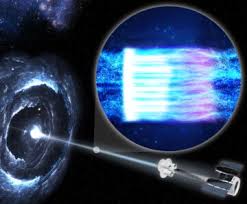Swift J1727.8-1613
A multi-institutional research team, including the Indian Institute of Technology (IIT) Guwahati, UR Rao Satellite Centre, Indian Space Research Organisation (ISRO), University of Mumbai, and Tata Institute of Fundamental Research, has delved into the depths of space to study a newly discovered black hole binary system known as Swift J1727.8-1613. This groundbreaking research, utilizing data obtained from AstroSat, has unveiled intriguing X-ray characteristics that offer unprecedented insights into the nature of black holes.
Challenges in Studying Black Holes Directly
Studying black holes directly poses significant challenges due to their mysterious nature. Black holes, by definition, do not allow anything to escape, making it impossible to detect or measure them directly. However, black hole binaries present a unique opportunity for investigation.
Black Hole Binaries: A Window into the Unknown
In black hole binaries, a black hole is paired with another celestial object, such as a normal star. This pairing creates a gravitational dance where the black hole’s immense gravity pulls material from its companion star, forming an accretion disk of gas and dust that spirals into the black hole.
The Birth of X-rays: Insights from Swift J1727.8-1613
As the material in the accretion disk swirls closer to the black hole, it reaches incredibly high temperatures, often soaring into the millions of degrees. This intense heat causes the material to emit X-rays, which can be detected by space-based telescopes like AstroSat.
Unraveling the Mysteries of Black Holes
The X-ray characteristics observed in Swift J1727.8-1613 provide valuable clues about the behavior and properties of black holes. By analyzing these emissions, researchers can gain a deeper understanding of black hole dynamics, accretion processes, and the physics of extreme environments in space.
In conclusion, the study of Swift J1727.8-1613 by a collaborative team of researchers has shed light on the enigmatic world of black holes. Through meticulous analysis of X-ray emissions, this research has advanced our understanding of these cosmic phenomena, paving the way for future discoveries in astrophysics.




